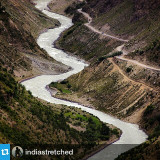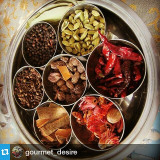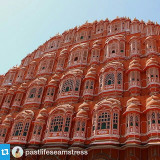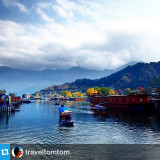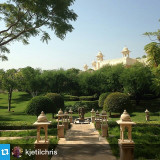Random image from our India photo collection
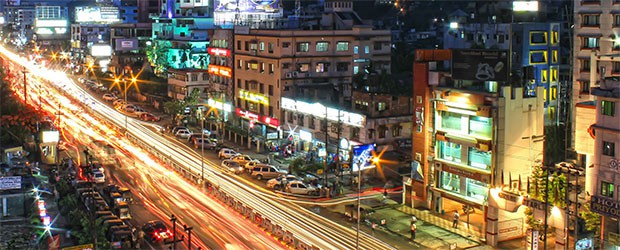
Jammu And Kashmir
Tourist Centres
The most famous tourist destination in the state is Srinagar, the state capital. Being an ancient city, there are many attractions that attract tourists to this magical land. Dal Lake, Nishat Bagh, Shalimar Bagh, and Chashme Shahi are some of the best-known tourist spot in Srinagar.
Jammu is the winter capital of the state and next in importance after Srinagar. The Mata Vaishno Devi shrine is a must for all those who visit Jammu. It is considered to have the highest mystical power in Jammu. However, the spirit of holiness spreads through the entire city. Jammu is also known as the ‘City of Temples’. The dargah of Peer Budhan Ali Shah is the other shrine that is believed to protect the local people. The other major tourist attraction is the Raghunath Temple Complex, devoted to Lord Rama and is the largest temple in North India. The construction of this temple was begun by Maharaja Gulab Singh in 1851 and completed six years later by his son Ranbir Singh.
The temple of Maha Kali (also known as Bahu or Bawey Wali Mata), located in the Bahu Fort, is considered second only to Mata Vaishno Devi in terms of mystical power. The temple was built shortly after the crowning of Maharaja Gulab Singh in 1822.
Other temples in the city include the Gauri Kund Temple, Parmandal Temple Complex, Peer Khoh Cave Temple, Ranbireshwar Temple, Shiva Temple and the Shudh Mahadev Temple.
Ladakh is home to the minority Buddhist community in the state. They have preserved their unique culture for centuries. Leh is the headquarters of this region. The major points of attraction are the Leh Palace, Namgyal Tsemo Gompa, Sankar Gompa, Shanti Stupa, and Soma Gompa.
The most stunning site in Jammu is the Sheesh Mahal. The palace now houses the Dogra Art Museum, which has miniature paintings of the various hill schools. The museum also has the handwritten Persian manuscripts of the Shahnama and Sikandernama. The palace was once the royal residence of the Dogra kings. Built as a group of buildings around a courtyard, the palace has a commanding view of the Tawi river on one side and the city on the other.
Patnitop is situated near the Vaishno Devi Temple, and is fast becoming a busy hill station and a good place to enjoy the nature in its eternity.
The Amar Mahal Palace Museum is a beautiful palace of red sandstone, which is situated between the most scenic environments of Jammu. It offers a beautiful view of the Shivaliks in the north and the river Tawi in the south. This was once the residential palace of Raja Amar Singh, but has now been converted into a museum. The museum has a golden throne made of 120 kg of pure gold.
Akhnoor, 32 km southwest of Jammu is a town rich in history. Standing on the banks of the mighty river Chenab, the town tells the tragic tale of the lovers Sohni and Mahiwal. Along the riverbank are the majestic ruins of the Indus Valley Civilization, which have a great historical importance.
Go back
Jammu is the winter capital of the state and next in importance after Srinagar. The Mata Vaishno Devi shrine is a must for all those who visit Jammu. It is considered to have the highest mystical power in Jammu. However, the spirit of holiness spreads through the entire city. Jammu is also known as the ‘City of Temples’. The dargah of Peer Budhan Ali Shah is the other shrine that is believed to protect the local people. The other major tourist attraction is the Raghunath Temple Complex, devoted to Lord Rama and is the largest temple in North India. The construction of this temple was begun by Maharaja Gulab Singh in 1851 and completed six years later by his son Ranbir Singh.
The temple of Maha Kali (also known as Bahu or Bawey Wali Mata), located in the Bahu Fort, is considered second only to Mata Vaishno Devi in terms of mystical power. The temple was built shortly after the crowning of Maharaja Gulab Singh in 1822.
Other temples in the city include the Gauri Kund Temple, Parmandal Temple Complex, Peer Khoh Cave Temple, Ranbireshwar Temple, Shiva Temple and the Shudh Mahadev Temple.
Ladakh is home to the minority Buddhist community in the state. They have preserved their unique culture for centuries. Leh is the headquarters of this region. The major points of attraction are the Leh Palace, Namgyal Tsemo Gompa, Sankar Gompa, Shanti Stupa, and Soma Gompa.
The most stunning site in Jammu is the Sheesh Mahal. The palace now houses the Dogra Art Museum, which has miniature paintings of the various hill schools. The museum also has the handwritten Persian manuscripts of the Shahnama and Sikandernama. The palace was once the royal residence of the Dogra kings. Built as a group of buildings around a courtyard, the palace has a commanding view of the Tawi river on one side and the city on the other.
Patnitop is situated near the Vaishno Devi Temple, and is fast becoming a busy hill station and a good place to enjoy the nature in its eternity.
The Amar Mahal Palace Museum is a beautiful palace of red sandstone, which is situated between the most scenic environments of Jammu. It offers a beautiful view of the Shivaliks in the north and the river Tawi in the south. This was once the residential palace of Raja Amar Singh, but has now been converted into a museum. The museum has a golden throne made of 120 kg of pure gold.
Akhnoor, 32 km southwest of Jammu is a town rich in history. Standing on the banks of the mighty river Chenab, the town tells the tragic tale of the lovers Sohni and Mahiwal. Along the riverbank are the majestic ruins of the Indus Valley Civilization, which have a great historical importance.
Go back


